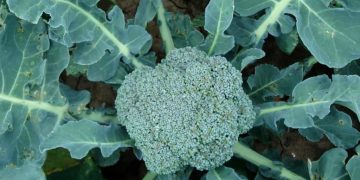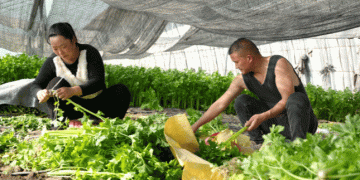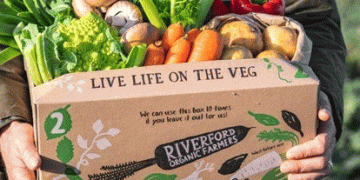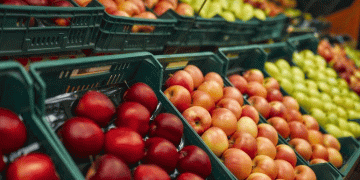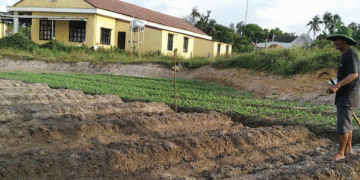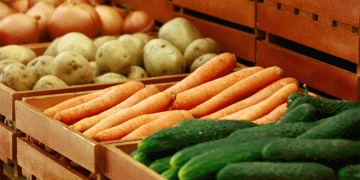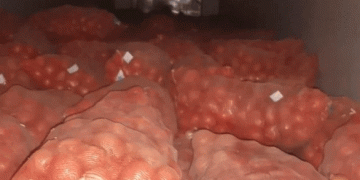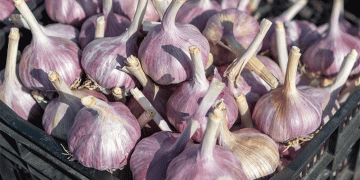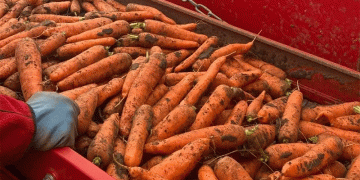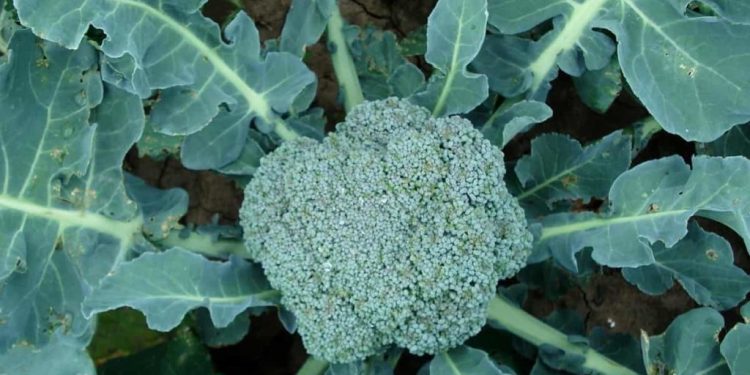The USA is the world’s largest Broccoli producer. Most Broccoli varieties grown in the United States are sold as fresh produce. Broccoli heads are made up of small buds that are ready to flower. Broccoli is a cruciferous vegetable. Broccoli belongs to the mustard family of plants and is closely related to Brussels Sprouts, Cabbage, Cabbage, Kale, and Kohlrabi.
Broccoli sprouts are also edible, eaten raw, and are a popular health food in the United States. There are mainly two distinct forms of Broccoli available. They are sprouting and heading Broccoli. Heading Broccoli variety is the form most commonly grown in the US Clusters of green flower buds characterize it atop a dense, green flower stalk with smaller clusters sprouting from the stem. Sprouting Broccoli makes a dense, white curd similar to cauliflower.
Broccoli originated in the Mediterranean and has grown since Roman times, but it is a relatively new crop to the Americas. The increasing popularity of Broccoli is related to its nutritional properties, market access, and convenience. Broccoli can be found in stores in several forms like fresh heads, pre-cut as florets, Broccoli slaw, individually frozen, fresh and frozen mixes, and soups.
How to start Broccoli farming in USA
Broccoli varieties in the USA
Common California Broccoli varieties include Avenger, Belstar, Destiny, Green Magic, Imperial, Legacy, Marathon, Pattern, and Tahoe. Northeast varieties include hybrids (Captain, Everest, Gypsy, Pinnacle, Diplomat, and Windsor) and non-hybrids (Imperial, Emerald Pride, Pacman, and Premium Crop). Commercial Broccoli growers in California use Italian green variety hybrids, also known as green sprout Broccoli or Calabrese. Cultivars have been selected that take 75 to 140 days to grow from planting to marketable maturity.
Varieties vary in plant color and size, head and flower size, and the extent to which side shoots or small lateral heads develop below the terminal head. Selection of the appropriate cultivar for each planting period and area is critical to achieving high yields and desired head quality. Calabrese Broccoli variety is the most common variety in the United States. It was first cultivated in the Calabria region of Italy.
It is also known as “Italian green.” Broccoli Rabe is another type of Broccoli cultivated in the Mediterranean region of the world. This Broccoli type has thinner stalks and a stronger flavor than the Calabrese variety and is very popular in Italian cuisine. Broccoli is also called baby Broccoli. It’s a cross between Chinese kale and Calabrese Broccoli, but it looks like an asparagus stalk with a Broccoli head. It is smaller and sweeter compared to regular Broccoli.
Site selection for Broccoli farming in the USA
Broccoli grows best in well-drained soils with good water-holding properties. If you grow Broccoli plant on sandy soil, irrigation is essential for optimal plant growth and proper development of the main head and side shoots.
Planting season and process for Broccoli farming in the USA
Because Broccoli is a cool-season crop, it is usually planted in the spring. Flower heads (the edible part of Broccoli) develop in response to ambient temperature. In the summer heat, Broccoli heads ripening in July mature faster (4-6 days) than heads ripening in cool spring. ) can germinate (produce flowers and seeds) and autumn periods. Because Broccoli is a cool-season crop, it is usually planted in the spring. Broccoli heads should be closed and firm (no yellow petals visible) to be considered good quality.
Under these conditions, seeds usually germinate in less than seven days. Adequate soil moisture is necessary for optimum germination of seeds. Depending on the climate, transplanting begins in late March to mid-April. Successive planting can be done every two weeks until August. The optimum plant population for Broccoli is 14,000 to 24,000 plants per acre. Therefore, the amount of seed per acre you should purchase varies with plant spacing, final plant stand, and percent seed germination.
In case you missed it: Top 16 Steps/Ways to Boost Broccoli Yield: How to Increase Production, Size, and Quality
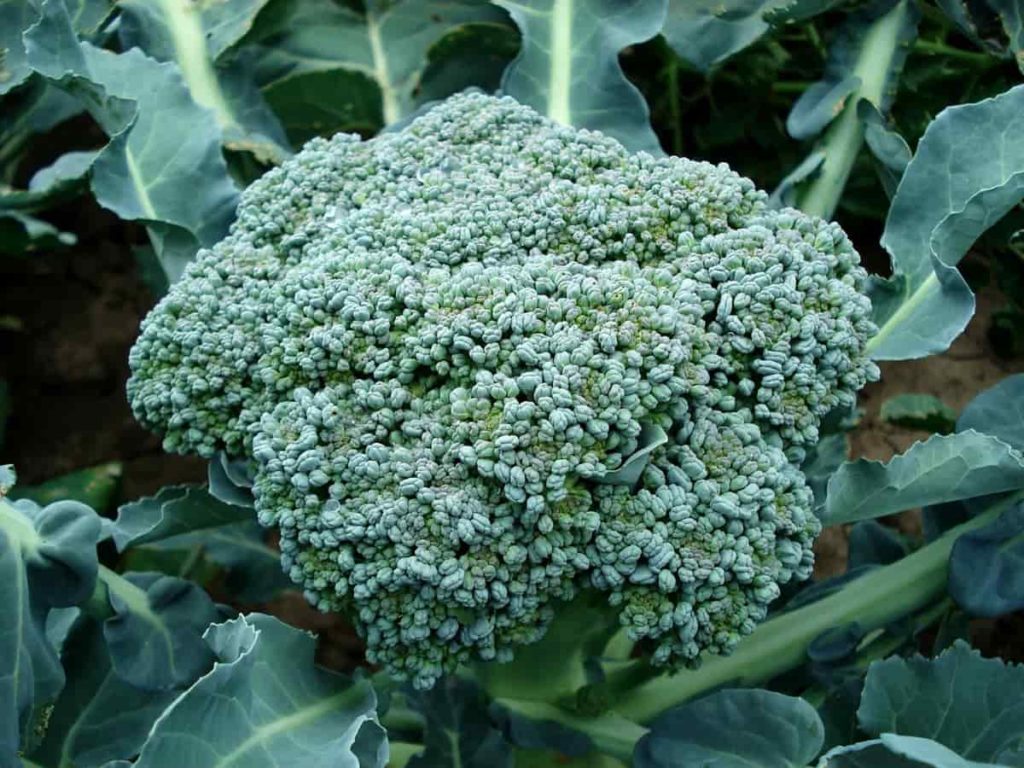
Depending on the type of planter used (random or precision), you should sow 0.5-1.5 pounds of Broccoli per acre and space the seeds 12-18 inches apart in 36-inch rows. When transplanting, you should have at least 11,000 plants per acre. Spacing decisions depend on your row spacing, irrigation capacity, planting date, and specific market needs (small or large heads). Broccoli grows well in cool Michigan conditions, especially near lakeshores where temperatures are moderate.
It doesn’t tolerate much heat, so it’s best to plan for spring and fall crops. It can withstand light frosts at the seedling stage but is not as frost tolerant as its close relative, cabbage. In the fall, mature Broccoli can withstand temperatures as low as 25°F and the cooler temperatures during this period make Michigan Broccoli sweeter than anything grown in warmer climates like California. In milder climates, an occasional Broccoli harvest is possible in December.
Broccoli production in the USA
The USA produces more than 2 billion pounds of Broccoli with a value of more than $750 million on more than 130,000 acres. Broccoli is a cool-season vegetable closely related to cabbage and cauliflower, which require similar production requirements.
Fresh market produce accounts for 95 percent of the US crop. It is planted in California with a large harvest from mid-October to December. California produces about 92 percent of the Broccoli grown in the US, followed by Arizona. California exports about 15 to 20 percent of its fresh market Broccoli production.
Climatic requirements for Broccoli farming in the USA
Broccoli is a hardy and cool-season vegetable in the mustard family. It is closely related to cabbage and cabbage, and the cultural requirements are similar. Broccoli seed germinates and grows at 4 to 35°C, but optimum growth is achieved when the monthly air temperature is 16 to 18°C.
In commercial plants, under optimal conditions, plants with large leaves form a compact flower head on a long, green, branched stalk. A medium flower head is 3 to 8 inches (7.5 to 20 cm) in diameter, and plants average about 12 to 24 inches (30 to 60 cm) tall. The desirable Broccoli variety has small uniform beads (flower buds), a good blue-green to green color, and narrow, dome-shaped heads that stand above the plant leaves for easy harvesting.
Broccoli growing states in the USA
The leading Broccoli-producing states are California (90 percent of the crop), Arizona, Texas, and Oregon. Broccoli is also widely grown in Northern Europe, Italy, and the Far East. In recent years, the Northeastern United States produced more than 500 acres. California generally produces more than 90 percent of the USA Broccoli crop. Other states that cultivate Broccoli include Wisconsin, Ohio, Arizona, Maine, Washington, Colorado, Oregon, Texas, and Florida. Fresh Broccoli is available year-round in grocery stores with growers across the country.
Broccoli is a cool-season vegetable closely related to cabbage and cauliflower, which require similar production requirements. Fresh market produce accounts for 95 percent of the US crop. It is planted in California with a large harvest from mid-October to December. California produces about 92 percent of the Broccoli grown in the US, followed by Arizona. California exports about 15 to 20 percent of its fresh market Broccoli production.
Irrigation management for maximizing yield
Broccoli requires adequate soil moisture to maximize yield and quality, especially during flower head formation. Overwatering can lead to the development of loose heads or hollow stems and can promote root diseases. Broccoli is irrigated by suing furrows and overhead sprinklers. Many growers use sprinkler irrigation in Broccoli for seed emergence or transplants, then furrow or drip irrigation for the rest of the crop.
Broccoli grown mostly in the Central Valley and Imperial County is furrow irrigated, and most of the acreage land on the Central Coast is irrigated using overhead sprinklers. After transplants are established, irrigation is usually done with a sprinkling at weekly intervals along the main bank during spring and summer. A few Broccoli acres on the Central Coast are produced using surface drip irrigation.
In case you missed it: Growing Broccoli in Greenhouse – Planting, Farming
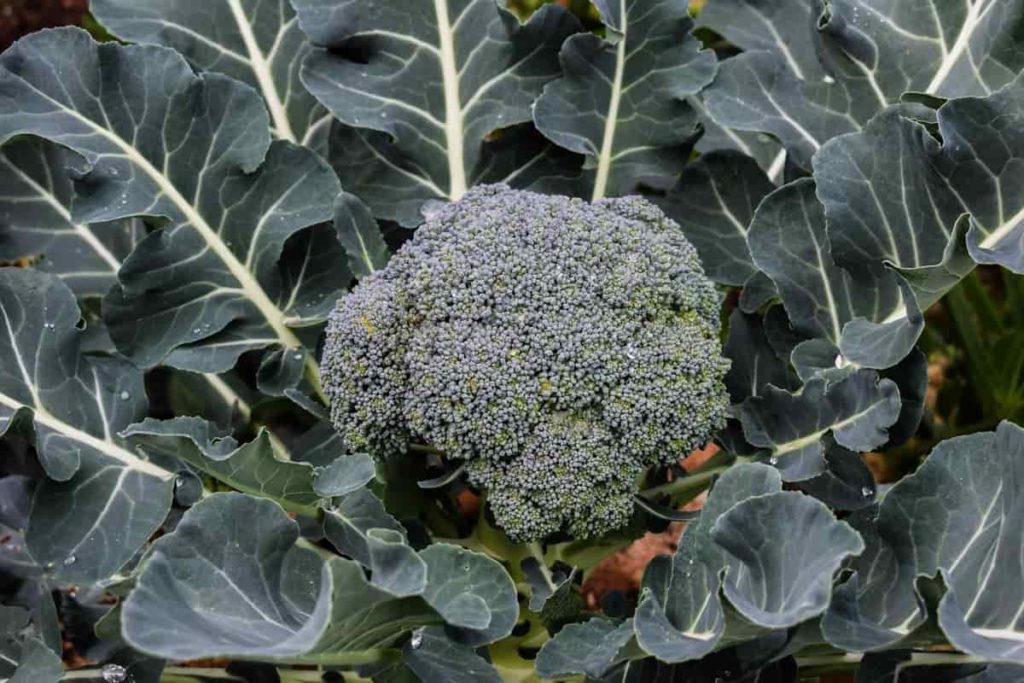
Drip is generally not used during summer on the Central Coast because of difficulties in achieving quality standards under high evaporation rates. However, some growers supplement the drip with a furrow or sprinkler during the head growth stage. Ventura County has increased Broccoli acreage (including establishments) grown on drip alone.
Growing a sprinkle-irrigated Broccoli crop in the Central Valley requires about 2 to 3 acre-feet of water and 1.5 to 2.5 acre-feet of water used for Broccoli production during summer with sprinklers on the central coast. Furrow-irrigated crops in Imperial County receive about three acre-feet water per acre during the fall. A drip irrigation system in Broccoli crops can reduce water use by up to 25 percent on soil types prone to runoff or sandy soils with limited water holding capacity.
Broccoli demand in the USA
US per capita fresh Broccoli consumption has followed a mostly upward trend over the past two decades. Consumption of fresh Broccoli has increased in response to the popularity of salad bars, but most of its consumption is due to its use as a side dish or entrée ingredient. Broccoli has also been marketed as a nutritional supplement because of its high fiber content, vitamin C, vitamin A, and mineral content, including calcium and iron, and cancer prevention agents, which have been shown to improve health has promoted consumption among conscious consumers.
Fertilizer and weed management in Broccoli farming
Before fertilizing a Broccoli crop, soil analysis should be done, and the amount of fertilizer should be determined. Generally, a Broccoli crop requires 150 kg of nitrogen, 100 kg of phosphorus, and 170 kg of potassium per hectare. At the time of transplanting, nitrogen 120 kg, phosphorus 80 kg, and potash 60 kg should be applied. Apply the remaining half of the nitrogen in two doses, 30 and 45 days after transplanting. Give micronutrients as per crop requirement.
Broccoli plants show boron deficiency, so apply a burn with a foil spray or water fertilizer if seen in the field. An important growing technique when growing Broccoli is weed management. Broccoli is often weedy during its early stages of growth. Herbs compete with young plants for access to space, sunlight, water, and nutrients. All Broccoli growers should have a weed control strategy. Strategies can vary significantly between countries, legal frameworks, production sources, the industry in which products are targeted, etc. When Broccoli grows well enough, weeds aren’t a big problem.
Pests, diseases, and their control in Broccoli farming
Broccoli-loving insects that attack plants include cabbage and seed corn maggots, while flea beetles, wireworms, cutworms, and aphids infest plants. In addition, mature Broccoli plants can be susceptible to loopers, beet armyworms, diamondback moths, Silverleaf whiteflies, and cabbage moths. Nematodes can interfere with growth if the soil becomes infested with parasitic insects.
Infection can lead to insects feeding on the heads and leaves, causing wilting of the leaves, reduced head size, or death of the entire plant. Insects also cause decay and the spread of pathogens. Common diseases include hollow stems, yellowing of flowers, and brown flowers. Fungal and bacterial pathogens are common in rainy, cool growing environments, including black rot, black leg, bacterial head rot, downy mildew, and Alternaria.
Pathogens can cause wilting, stunting, leaf rot, blisters, and plant death. Poor irrigation and mishandling can allow pathogens to spread to other plants and fields. It can often be prevented by crop rotation and disease-resistant varieties. Treatment of both plants and foliage with fungicides is often a helpful treatment.
In case you missed it: Organic Broccoli Cultivation, and Growing Practices
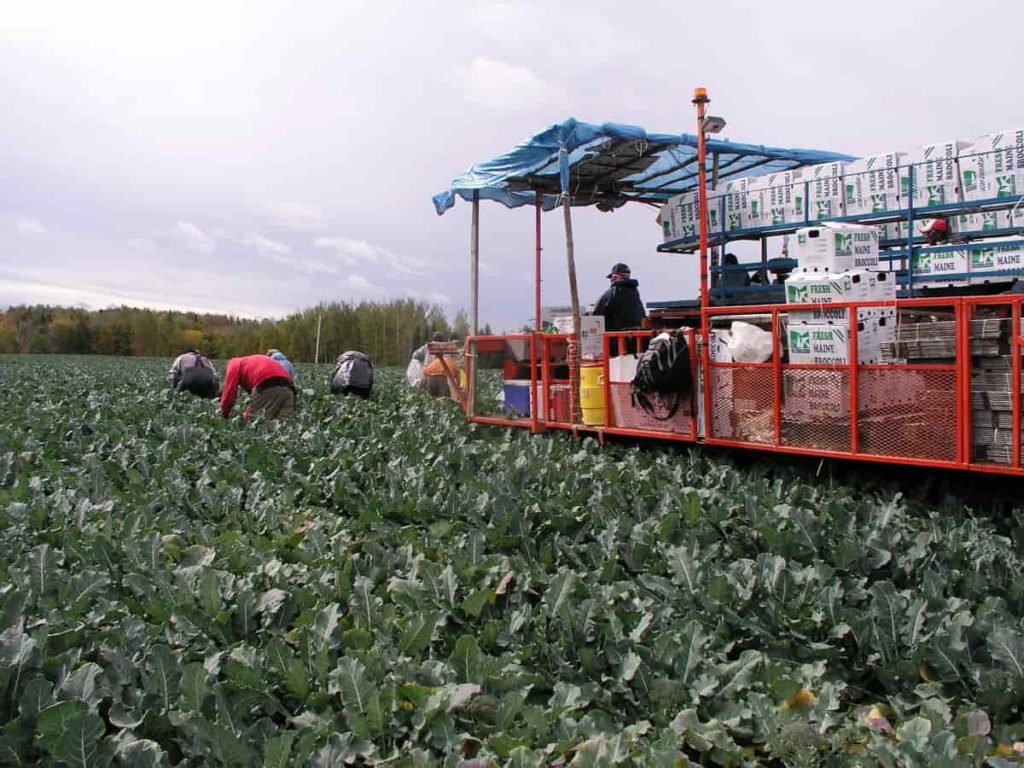
Broccoli harvesting season in the USA
Harvest Broccoli before flowering while the florets are still in a hard head. If the flowers bloom, it is too late. When the terminal head of Broccoli is removed, other small heads will form as side shoots develop, increasing overall yield. Do not remove the plant after removing the large head. Broccoli is highly perishable in hot conditions, so it is best to harvest in the morning and refrigerate immediately.
Broccoli is generally grown for both fresh and processed markets. Market price determines how Broccoli is harvested—the crop may be hand-harvested twice, depending on market price and quality. Value-added fresh Broccoli products range from specialty crown cuts, spears, and fresh florets to Broccoli slaw to pre-packaged and other convenience foods destined for export, food service, and home consumers.
Most Broccoli is ready to harvest 60-90 days after transplanting. However, the harvesting time depends mainly on the variety and environmental conditions. Harvest Broccoli when the heads reach the appropriate size for their variety. The heads should be compact, and their color should be uniform. We usually harvest the central, central head first. Side heads usually mature later. To promote the growth of the second head after the first crop is harvested, continue with normal fertilization and irrigation scheme.
Broccoli marketing in the USA
Broccoli grown in the Northeastern United States is generally available from June through October. Fresh market Broccoli is traditionally sold from open bulk containers, in divided quantities of small florets, or as several small heads tied together with a rubber band. Several marketing alternatives for the Broccoli grower: wholesale marketing, produce auctions, cooperatives, local retailers, and roadside stands.
When planning production, consider the ability to market first if you did market research because growers overestimate their ability to sell Broccoli in a given market. For most farmers, broccoli production of less than one acre of many vegetable crops is common. Broccoli is sold as a fresh or processed product, although most growers produce it for the fresh market. Processed Broccoli is usually frozen for retail sale and sold as spears or chopped, while a limited amount is canned for soup.
In case you missed it: Broccoli Farming in Polyhouse for Profit – A Full Guide
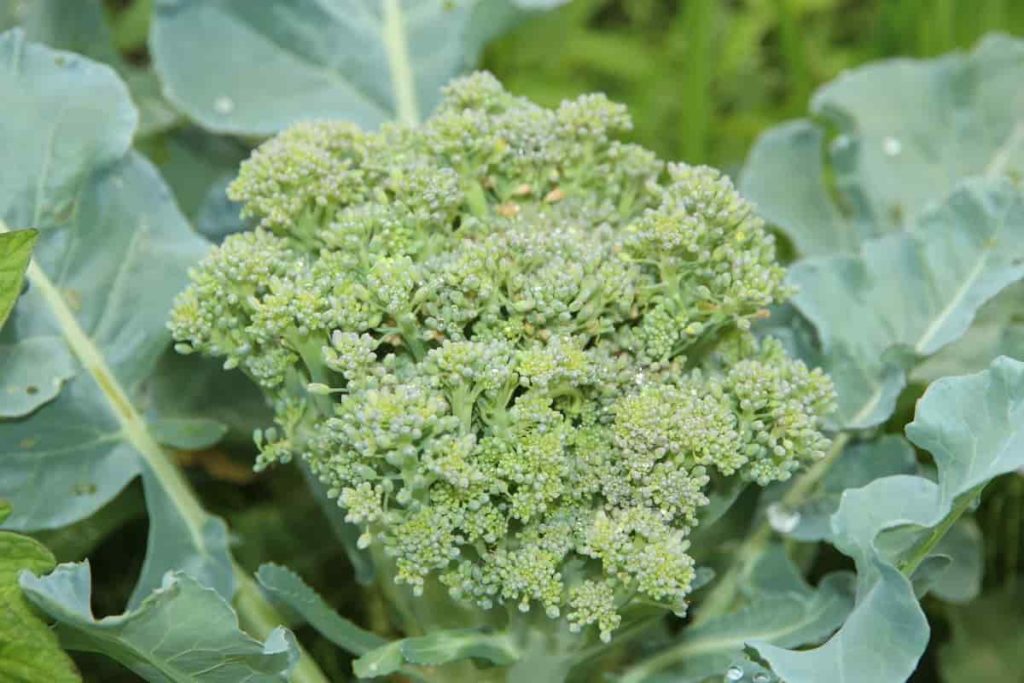
Broccoli grown for processing is usually produced under a contract between the grower and the processor. It is a dual-use vegetable as fresh varieties can be used for processing. The emergence of a fresh value-added sector, including pre-cut and bagged Broccoli florets and Broccoli coleslaw, is helping to expand Broccoli markets, and additional convenience is helping to increase total Broccoli consumption.
Fresh market produce accounts for 95 percent of the US crop, and home freezers obtain their raw products under contract with growers who plant plants specifically for requirements set by processors. Broccoli is still considered a dual-use vegetable, meaning that varieties suitable for the fresh market can sometimes be used for processed products and vice versa. The demand for Broccoli is continuously increasing both domestically and internationally. The demand for Broccoli is attributed to health issues and convenience issues.
Frequently asked questions about Broccoli farming in the USA
Is Broccoli farming profitable?
At a wholesale rate of Rs 25 per kg, a farmer can earn around Rs 3 lakh from Broccoli production. A serving of Broccoli, a vegetable similar to cabbage and cauliflower, yields 800 grams. It contains vitamins A and C and minerals such as potassium, sodium, and iron, as well as digestible fiber.
Which state is famous for Broccoli?
California produces 90 percent of US Broccoli, with Arizona a close second. 15-20% of Broccoli is exported to Canada, Japan, and Taiwan.
Where does the US import Broccoli from?
Most frozen Broccoli imports come from Mexico, with a small amount coming from Guatemala.
Is the Broccoli plant easy to grow?
Broccoli plant is easy to grow and yields quickly, giving you a delicious, nutritious crop of blue-green heads.
Why are my Broccoli plants tall and skinny?
Broccoli is a cool-season crop, so soil that is too warm can also cause Broccoli to grow tall and bolty.
Can you overwater Broccoli?
Broccoli can become overwatered if watered frequently. Broccoli needs soil to dry out between watering sessions. So, watering your plants every one to two days is plenty.
Why is my Broccoli stems so thin?
Broccoli, whether seedlings or mature plants are grown in the garden, can be leggy, meaning the stems are long, thin, and unable to support the plant. Repotting leggy Broccoli plants is like moving an infant from a crib to a bigger bed to compensate for its growth.
In case you missed it: Growing Broccoli In Pots, Containers, Indoors Guide
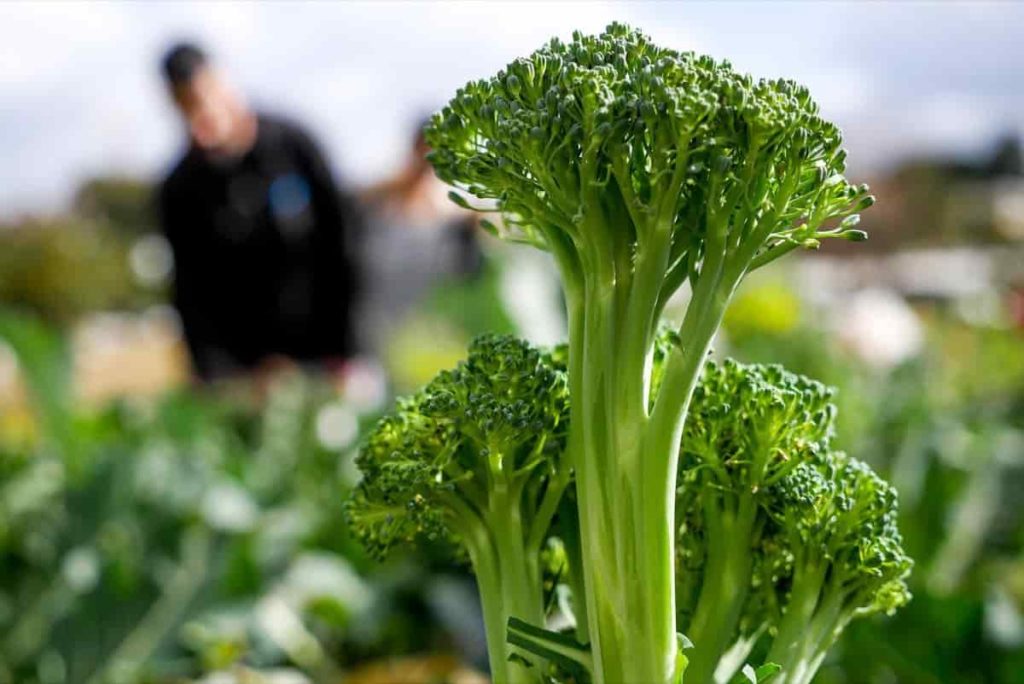
Why are my Broccoli sprouts drooping?
Plant them outside when they are small. Broccoli sprouts fall over because the transplanted roots don’t get enough water to keep the plant stem rigid. Watering the plants does not completely solve this, as root hairs need time to grow into intimate contact with soil particles.
A source: https://www.agrifarming.in
